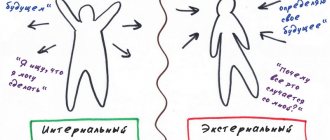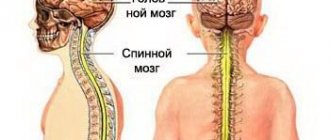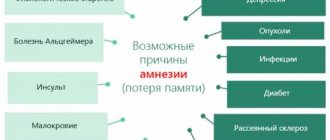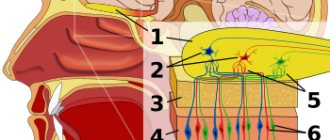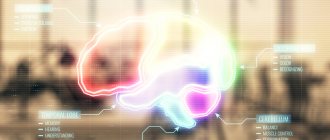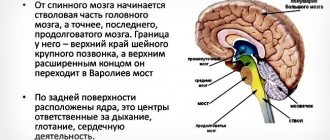The role of thinking in cognition: thinking in images is an essential component of cognition
Just as any living being consists of cells, our understanding of the world around us is made up of individual thoughts. This is the role of thinking in cognition. But what is thought? Where does it begin and where does it end? It is impossible to answer these questions. The process of learning about the world around us is gradually built up from individual particles, whether we realize it or not.
Cognition is the process of receiving, processing and assimilating information from the surrounding world through the senses. There are sensory and rational cognition.
Sensory cognition
This type of image fixation is usually divided into three main forms:
- Performance. Representation, as a form of sensory cognition, is expressed through the manipulation of images of objects that were previously perceived using the senses. Ideas are not always real; sometimes they are formed based on descriptions. For example, when reading a book, you imagine what this or that object looked like only on the basis of a brief description of the author. It follows that the image of an object arising in a similar way will be different for each person, depending on the number of details described;
- Perception. Perception is a more direct process, it is a direct reflection of what is felt at the moment. Depending on the sense organ used, we can say that we see trees, hear the sound of the wind, smell pine needles, and so on. Through perception, holistic images of the surrounding reality are formed in our consciousness;
- Feeling. And the simplest form is sensation. This type of cognition forms individual characteristics of perceived objects, be it color, sound, taste or smell.
Rational cognition
But these processes themselves only provide qualitative and figurative characteristics of objects and phenomena, but do not explain the essence in any way. And it is here that we can talk about rational knowledge, or thinking. Having only a set of individual facts and images, we will not be able to analyze the situation, which means there will be no adequate reaction.
Presentation: “Psychology of cognition”
It is the ability for rational cognition that is the basis of human intelligence as a phenomenon. However, it cannot be said that it is the very essence of thinking, since without factual material, it is impossible to develop thoughts and build conclusions.
Here we can say that sensory knowledge, like a complex puzzle consisting of individual pieces, the key to collecting which will be the ability to think.
That is, we understand the world around us using perceived images.
Thinking and its features
Thinking is a complex process that ensures all human social reactions. Understanding the surrounding reality, we always strive to get to the bottom of things, answer complex questions, solve simple and complex life problems.
It is difficult to overestimate the role of thinking in cognition; based on some properties of the rational type of intelligence, we can talk about the enormous role of thought both in the life of an individual and in the history of civilization.
Thinking, like any other process, has its own characteristics:
- It is always indirect. When a person determines the relationship between things, the basis for this is previous experience, and not just specific images and sensations received at a particular moment in time. This isolation of thought processes clearly manifests itself in moments when, intersecting with the effects, we find the cause. An example is a simple life situation that everyone has experienced. Waking up in the morning we see puddles on the street, based on what we saw earlier, we can draw a logical conclusion that it rained at night;
- The basis of thinking is the knowledge that a person possesses. The basis for constructing logical conclusions is the fundamental knowledge acquired by a person during his life. For example, seeing steam rising from a saucepan, we can conclude that the water in it has boiled. Firstly, we relied on previously gained experience in this area, as well as on the knowledge that having reached a certain temperature, water molecules begin to transform into a gaseous state, forming that same steam;
- Thought always exists in a generalized form. The process of cognition is built on the basis of simple observations, but not reduced to them. This means that when observing a specific phenomenon, we correlate all its properties with the properties of all objects we have seen before. That is, we think from the particular to the general and, thus, abstract from a specific phenomenon, trying to see the essence of things. It is this property of thinking that allows us to separate the essential from the inessential;
- Thinking processes always take place in verbal form. Speech has a very close connection with thinking, since words are its very structural components. Thinking “green,” we pronounce this word in our heads and the color itself or objects with a characteristic color appear before our mind’s eye. It is the transformation of images into words that makes it easier for us to work with abstractions. Words are already a generalization of several phenomena, therefore the ability to manipulate them subsequently creates a complete picture of what is happening;
- Thought on an organic level is connected with action. It is such a reflection of what is happening that will exactly correspond to the solution of the current problem.
As a result, we can conclude that the thinking process occurs abstractly from particular concepts and generalizes objects that are homogeneous in essence into groups, highlights the most important thing and reveals connections both within one group and between them.
https://www.youtube.com/watch?v=XXUePIW7mho
It follows from this that the process of thinking is a more highly organized form of mental activity than sensory knowledge of reality.
However, it is impossible to imagine a thought formed from scratch. Each thought process is based on a certain number of facts that were obtained through sensory perception of the surrounding reality.
Thinking is a set of processes that explain the relationship between individual facts and phenomena, and it is based on cognition, as a provider of the necessary information.
One can consider thinking as the highest form of biological evolution, as a special structure of the highest organization, which is capable of presenting a picture of reality through ideal images.
However, thinking arose not only as a biological process, it was formed under the influence of social factors such as work and speech. And that is why this process is characteristic only of humans as a biological species.
A distinctive feature of thinking is that it reflects the surrounding reality in abstractions. This ability of his elevates this type of intellectual activity to the rank of the highest organization.
After all, relying only on sensory perception, it is impossible to characterize cause-and-effect relationships. The main forms of thinking are judgment and inference.
Judgment is a reflection of real objects with their connections and interactions.
In order to solve the problem assigned to a person, a chain of logically interconnected judgments is built through thinking; it is this type of mental activity that will be called inference. Through inferences, it is possible to derive new logical connections and discover new interactions.
Understanding thinking as the main process of cognitive activity, we can say that it is this process that ensures the discovery of knowledge inaccessible with any other methods of perception. Thinking helps when cognition through the senses becomes ineffective. Without thinking there can be no knowledge; it is an obligatory component of it.
- TonusMozga
Source: https://tonusmozga.ru/poznanie/mir-poznaniya/rol-myshleniya.html
Why are brains so wrinkled?
As we discussed, the evolution of our brains was driven from within, adding cool new things on top of the existing model. But building from the inside has its drawbacks, because the need for a person to be born through the vagina places a limit on the size of the head.
Therefore, evolution had to contrive. Because the cortex is so thin, it scales with increasing surface area—that is, if you create a lot of folds (that is, both sides fit into the space between the two hemispheres), you can triple the surface area of the brain without increasing the volume much. When the brain first appears in the womb, it is smooth - folds form in the last two months of pregnancy.
If you remove the cortex from the brain, you can spread out a 2mm square sheet of brain with an area of 48 x 48 centimeters. Napkin for dinner.
This tissue is where most of the activity in your brain happens - it's why you can think, move, feel, see, hear, remember, speak and understand language. Gorgeous napkin, no matter how you look at it.
And remember that you are a jelly ball? When you try to become aware of yourself, it all happens in the cortex. That is, you are not a jelly ball, you are a napkin.
The magic of folds in increasing the size of the napkin is evident when we place the rest of the brain on top of our peeled cortex.
So, although not perfect, modern science has gained some understanding of the big picture when it comes to the brain. In principle, we understand the smaller picture quite well. Let's check?
The neocortex is what makes a person human
Neocortex is a nice word.
But what does it mean translated from Latin? Probably each of us in childhood, for diarrhea and intestinal upset, took a herbal astringent and fixative - oak bark, or Cortex Querkus.
Cortex – means “bark”, cortical substance. Well, “neo” means new, and only in the Wachowski brothers’ film “The Matrix” the character’s name “Neo” has a different, sacred meaning – “the chosen one.”
Neocortex, neocortex is the new human cerebral cortex . In a sense, its significance for our civilization is truly chosen. Another name for it is the cloak, pallium, or isocortex.
It covers with a uniform gray cloak all the white matter of the cerebral hemispheres, which are conductive pathways, “wires”, deprived of the independent ability to generate impulses.
When the term brain is used, it is this part of the central nervous system that is meant.
The name isocortex - isos - identical, equal - indicates that the entire brain is covered with a cortex of approximately the same thickness, consisting of six layers of neurons. This system occupies a larger area than can be occupied if it were smooth, so the isocortex forms grooves and convolutions.
Why is new bark needed?
By and large, all vital functions can be perfectly performed without the influence of the neocortex. The neocortex is not needed at all for this. We will be able to breathe, eat, reproduce, have fun and even bask in the sun.
But we will not be able to read, write, draw, or engage in political activities. We will not be able to advance science and technology, play musical instruments, we will not be able to light a fire and plant a seed in the ground. The neocortex is exactly what makes us human .
These are thinking, emotions and the final sections of sensitive analyzers. It is in the neocortex that the first neurons of voluntary and highly coordinated movements lie.
Without connections between the neocortex and muscles, fine motor skills were impossible, and we performed only gross, automated movements: jumping, grabbing, chewing, copulation.
Let's say more: the new cortex is what distinguishes mammals, that is, animals from their immediate predecessors - fish, amphibians and reptiles.
Of course, these more primitive creatures also have sections of the brain that are responsible for learning and emotions, but there is no specific system that is exempt from “housekeeping”, that is, from controlling breathing, blood circulation and other vital functions.
About emotions and stereognosis
The human neocortex is capable of performing miraculous things that no other species of living being on our planet, not even primates, can perform. Let's do a simple experiment. Close your eyes, go to your desk or bedside table, and take any thing with your right hand.
Without looking, determine what it is by touch. Now say out loud what it is and look at the object. It could be a coin, a key, a bottle of perfume, a cell phone, a matchbox.
Just? Certainly! Now let’s see what our body needed to do in a second to achieve this:
- a volitional impulse caused the cells of the motor zone of the neocortex to send a motor impulse down into the white matter;
- the impulse was distributed to the cerebellar nuclei, which maintained balance, and you could get up and walk;
- the controlling signal reached the middle ear system and semicircular canals, which sent information to the cerebellum that you began to move, maintaining the desired position;
- some of the signals reached the muscles of the legs, and you began to move;
- because you move with your eyes closed, the statokinesis system is activated. This is a muscle sense that transmits information to the brain about the position of individual parts of the body in the dark. (For example, when the posterior columns of the spinal cord are damaged, a person can walk only by seeing his legs; in the dark he falls);
- having felt the bedside table, sensitive tactile impulses rushed up to the thalamus, where the primary subcortical system for analyzing sensations is located;
- the thalamus “reported” that no pain was detected, and the impulse was transmitted further to the cortex.
These are the preparatory, and far from complete, stages, and we have not yet begun to carry out the experiment!
Now we take the matchbox in our right hand. How do we guess that it is him? By sound. He rustles. The hearing analyzer comes into operation, switching through the subcortical centers for analyzing sound stimuli.
The temporal lobe of the neocortex is activated. Further, baroreceptors and tactile receptors provide information about the density, weight, temperature, and shape of an object.
All this information rushes to the cerebral cortex, where the summation of the acquired knowledge is carried out.
The function of recognizing objects by touch is called the stereognosis system. The area responsible for stereognosis is located in the superior parietal lobule, and occupies a very small part of the neocortex of the cerebral hemispheres.
And now the most interesting thing: if you identified an object in your right hand, then the left parietal lobe, posterior to the central gyrus, was “engaged” in stereognosis. This means that many functions in the cortex are crossed.
To name an object, the function of motor speech is required: Broca's speech motor area, located in the posterior part of the inferior frontal gyrus of the cerebral cortex, is activated.
Then the impulse reaches the vocal muscles, tongue, upper palate, and you pronounce the desired name. A small feature: if you have never held this object in your hand before, the stereognosis function does not work: there is no accumulated experience in the cortex. And you can name an object by its qualities: smooth, heavy, warm, and so on.
In addition to such elementary functions for us, the isocortex is completely the source of thinking and the entire emotional life of a person.
About ancient bark
However, if there is a new cortex, then the “gray matter” itself, then it means there is an old cortex. Where did it go and how does it differ in function from the neocortex?
The ancient zones of the cortex are located deep in the brain, in the hippocampus area.
They ceased to perform higher functions characteristic of reptiles and fish, and took on more primitive functions, nevertheless, tightly integrated into a single indivisible whole into the work of the cortex and brain as a whole. One of these deep-lying formations is the limbic, or limbic-reticular system.
It includes more than 12 structures that are subject to the isocortex, for example, the olfactory triangle, the hypothalamus, which is the primary pain analyzer, and the reticular formation, which is considered one of the sleep regulatory centers.
The limbic system helps organize speech, takes part in the formation of memory mechanisms, and with its help behavioral reactions and emotions are formed.
In this case, the limbic system is under complete control of the cerebral cortex, but has largely autonomy.
It is worth recalling that there are also deeper and more autonomous centers lying below the limbic system, inherited from amphibians and fish. These include the medulla oblongata, which “has no time for emotions.” It deals only with vital functions: regulation of blood circulation, breathing, and damage to it, unlike damage to areas of the cortex, can lead to death.
Neurophysiology is a very interesting science. It answers the question of where we got such a brain, which is the thinnest and most highly organized structure in the part of the universe that we have studied.
The brain is matter prone to self-knowledge, abstract thinking and explanation of existence.
But, according to Gödel’s theorem on the incompleteness of formal systems, the proof requires the framework of a metatheory that lies outside the system under consideration.
Who knows, maybe human self-knowledge is only possible when we go beyond the limits of our existence? Science, unlike material measures, is infinite, although it is a product of “gray matter”.
Pogrebnoy Stanislav Leonidovich, neurologist
Rate this article:
Total: 150
4 150
Source: https://mozgius.ru/stroenie/neokorteks.html
Practical implications from the MacLean model
Knowledge of the theory of the three brain systems allows you to answer all the questions outlined in the introduction to the article. Here we will present the answers in general form, and you can find specific examples, methods and techniques in the relevant articles on our website. The main thing is that the conclusions from this theory will allow you to understand what this or that phenomenon is connected with and how you can fight it.
Three brain systems: verbal vs nonverbal communication
For example, why do they say that nonverbal cues are more reliable than words? Because the limbic brain is responsible for non-verbal signals
, and for words - the neocortex. As we said above, the neocortex is under our control, while the limbic brain is practically not. Therefore, if a person responds positively in words, but his gestures indicate a negative answer, this is a good reason to doubt the veracity of the speech.
The ability to read other people's gestures is definitely a useful skill that can provide a lot of useful information. However, any good publication devoted to this topic will definitely write to you: do not label a person before you find out all the circumstances
. For example, it is believed that if a person touches his nose, it means he is lying. In some cases this is true, but other options are possible. Let's say 15 minutes ago this person suddenly had a nosebleed and now instinctively checks to see if everything is okay.
Opposition between the limbic brain and the neocortex
As for procrastination, fear of new things, as well as enthusiasm in theory and doing nothing in practice, these, like other similar situations, are united by the opposition of the neocortex and the limbic brain
.
Let us remember that the latter does not like changes, strives to protect us from emotional trauma and prefers momentary pleasures. Therefore, we often procrastinate on tasks that have led to failure in the past (the limbic brain protects us from unpleasant emotions). Because of this, sometimes it is so difficult for us to leave our comfort zone: no one knows what can be expected there, and the limbic brain sets us up in advance against such a step and against changes (even positive ones). Related to the tension between these two parts of the brain is the fact that we often make promises to ourselves and then fail to keep them
. The fact is that promises, goals and plans are the prerogative of the neocortex. But all this leads to changes and/or delays immediate gratification, which causes protest from the limbic system of the brain. What do you want more: watching a TV series or cleaning? Should you eat boring healthy food or enjoy pizza and chocolate cake? The limbic brain is on strike, and most of us succumb to its provocations in one way or another. That's why we surf the Internet eating chips instead of cleaning and sticking to our diet.
On the other hand, the neocortex is capable of inspiring us and infecting us with enthusiasm.
so that we start doing something, and this feeling extends to the emotional brain. But when enthusiasm and inspiration fade, the limbic system remembers that it’s time to relax, and we are again drawn to momentary pleasures. That's why our cheerful beginning slides into the same procrastination and doing nothing.
Considering that the limbic brain is responsible for emotions, and the neocortex is responsible for logic, the opposition of these two systems can also be traced in situations when “a person understands what’s what with his mind, but feels differently with his heart.” Only in this context should it sound: “I understand with the neocortex, but the limbic system makes me think differently.”
What conclusion can be drawn?
However, everything described above does not mean that the only thing left for us is to follow the lead of the limbic brain. It’s just that in order to achieve more success in a shorter time, it’s worth taking this contradiction into account. One of the most common recommendations is to calm the limbic brain as much as possible and not drive it into panic.
.
For example, it is precisely because of his protests that many of us are unable to start a new life on Monday or January 1st.
Sudden changes (and fear of failure) are completely disliked by the limbic brain, and not everyone has the willpower to resist its temptations. Therefore, it is often more effective to step out of your comfort zone gradually and also gradually fight procrastination.
(if, of course, you have the appropriate capabilities for this). Small steps will not cause such a strong protest from the limbic system. Additionally, minor changes usually require that you set goals that can be achieved in the short term (for example, “Learn 10 new foreign words every day”). If you achieve them, it will be an excellent motivation to continue moving in the chosen direction. While long-term goals (“Learn a foreign language”) will not give quick results, which means they will not become a motivator for the limbic brain, because it wants positive emotions here and now, and not sometime there in the future.
Reptilian Brain: Dulled but Not Forgotten
Let's turn to the reptilian brain. In the modern world, it protects us, but is far from being fully active. Its greater activity was necessary when a person survived in harsh nature. Now, of course, we also need him, but he doesn’t have as much work to do as before. Meanwhile, sometimes his too active work leads to psychological problems
. Let's say that sometimes it is he who owes strong fears, all-consuming rage and other extremely vivid, but not always productive feelings.
The role of the neocortex in perception of the surrounding world and thinking
Man is the only species on earth that, in addition to satisfying the needs dictated by instincts, is capable of carrying out emotional, creative and mental activities.
The uniqueness of people lies in the presence of extensive, highly developed and complexly constructed areas of the brain, which have the general name neocrtex.
Therefore, in the study of man, as a species at the upper stage of evolution, the main directions are questions about the structure and functions of this part of the central nervous system.
General information
The neocortex (new cortex, isocortex or lat. neocortex) is an area of the cerebral cortex, occupying about 96% of the surface of the hemispheres and having a thickness of 1.5 - 4 mm, which are responsible for the perception of the surrounding world, motor skills, thinking and speech.
The neocortex consists of three main types of neurons - pyramidal, stellate and fusiform. The first, the most numerous group, which makes up about 70-80% of the total amount in the brain. The proportion of stellate neurons is at the level of 15-25%, and fusiform neurons - about 5%.
In its structure, the neocortex is almost homogeneous and consists of 6 horizontal layers and vertical columns of the cortex. The layers of the new cortex have the following structure:
- Molecular, consisting of fibers and a small number of small stellate neurons. The fibers form a tangential plexus.
- The outer granular layer is formed by small neurons of various shapes, which are connected to the molecular layer over the entire area. At the very end of the layer there are small pyramidal cells.
- External pyramidal, consisting of small, medium and large pyramidal neurons. The processes of these cells can be associated with both layer 1 and the white matter.
- Internal granular, which consists mainly of stellate cells. This layer is characterized by a loose arrangement of neurons.
- Internal pyramidal, formed by medium and large pyramidal cells, the processes of which are connected with all other layers.
- Polymorphic, the basis of which is made up of spindle-shaped neurons, connected by processes with layer 5 and white matter.
In addition, the neocortex is divided into areas, which in turn are subdivided into Brodmann areas. The following areas are distinguished:
- Occipital (17,18 and 19 fields).
- Superior parietal (5 and 7).
- Inferior parietal (39 and 40).
- Postcentral (1, 2, 3 and 43).
- Precentral (4 and 6).
- Frontal (5, 9, 10, 11, 12, 32, 44, 45, 46 and 47).
- Temporal (20, 21, 22, 37, 41 and 42).
- Limbic (23, 24, 25 and 31).
- Ostrovkovaya (13 and 14).
The cortical columns are a group of neurons that are located perpendicular to the cerebral cortex. Within a small column, all cells perform the same task. But a hypercolumn, consisting of 50-100 mini-columns, can have one or many functions.
Functions of neocortex
The new cortex is responsible for performing higher nervous functions (thinking, speech, processing information from the senses, creativity, etc.). Clinical trials have shown that each area of the cerebral cortex is responsible for strictly defined functions.
For example, human speech is controlled by the left frontal gyrus. However, if any of the areas is damaged, the neighboring one can take over its function, although this requires a long period of time.
Conventionally, there are three main groups of functions performed by the neocortex - sensory, motor and associative.
Sensory
This group includes a set of functions with the help of which a person is able to perceive information from the senses.
Each sense is analyzed by a separate area, but signals from others are also taken into account.
Signals from the skin are processed by the posterior central gyrus. Moreover, information from the lower extremities goes to the upper part of the gyrus, from the body to the middle part, from the head and hands to the lower part. In this case, the posterior central gyrus processes only pain and temperature sensations. The sense of touch is controlled by the superior parietal region.
Vision is controlled by the occipital region. Information is received in field 17, and in fields 18 and 19 it is processed, that is, color, size, shape and other parameters are analyzed.
Hearing is processed in the temporal region.
Charm and taste sensations are controlled by the hippocampal gyrus, which, unlike the general structure of the neocortex, has only 3 horizontal layers.
It is worth noting that in addition to the zones of direct reception of information from the senses, next to them there are secondary ones, in which the relationship between the received images and those stored in memory occurs. When these areas of the brain are damaged, a person completely loses the ability to recognize incoming data.
Motor
This group includes the functions of the neocortex, with the help of which any movement of the human limbs is carried out. Motor skills are controlled and controlled by the precentral region.
The lower limbs depend on the upper parts of the central gyrus, and the upper limbs depend on the lower ones. In addition to the precentral, the frontal, occipital and superior parietal regions are involved in movement.
An important feature of the performance of motor functions is that they cannot be performed without constant connections with sensory areas.
Associative
This group of neocortical functions is responsible for such complex elements of consciousness as thinking, planning, emotional control, memory, empathy and many others.
Associative functions are performed by the frontal, temporal and parietal regions.
In these areas of the brain, a reaction to data coming from the senses is formed and command signals are sent to the motor and sensory areas.
To receive and control, all sensory and motor areas of the cerebral cortex are surrounded by associative fields, in which the received information is analyzed.
But at the same time, it is worth considering that the data coming into these fields is already primarily processed in the sensory and motor areas.
For example, if there is a disruption in the functioning of such an area in the visual area, a person sees and understands that there is an object, but cannot name it and, accordingly, make a decision about his further behavior.
In addition, the frontal lobe of the cortex is very tightly connected to the limbic system, which allows it to control and manage emotional messages and reflexes. This makes it possible for a person to develop as a person.
The performance of associative functions in the neocortex is possible due to the fact that the neurons of this part of the central nervous system are able to retain traces of excitation based on the feedback principle and can persist for a long time (from several years to a lifetime). This ability is memory, with the help of which associative connections of the information received are built.
The role of the neocortex in emotions and stereogynesis
Emotions in humans initially appear in the limbic system of the brain. But in this case they are represented by primitive concepts, which, once in the new cortex, are processed using the associative function. As a result, a person can operate with emotions at a higher level, which makes it possible to introduce concepts such as joy, sadness, love, anger, etc.
The neocortex also has the ability to dampen strong outbursts of emotion in the limbic system by sending calming signals to areas of high neuronal excitability. This leads to the fact that in a person the dominant role in behavior is played by the mind, and not by instinctive reflexes.
Differences from old bark
The old cortex (archicortex) is an earlier emerging part of the cerebral cortex than the neocortex. But in the process of evolution, the new cortex became more developed and extensive. In this regard, the archicortex ceased to play a dominant role and became one of the constituent parts of the limbic system.
If we compare the old one in terms of the functions performed, then the first is assigned the role of fulfilling innate reflexes and motivation, and the second - managing emotions and actions at a higher level.
In addition, the neocortex is significantly larger in size than the old cortex. So the first occupies about 96% of the total surface of the hemispheres, and the size of the second is no more than 3%. This ratio shows that the archicortex cannot perform higher nervous functions.
Perception of the world
Why do we, having the same senses of perception of the world around us, perceive it differently?...
Perception of the world and sense organs
Modern science traditionally speaks of five types of perception of the surrounding world:
- vision;
- hearing;
- touch (tactile);
- taste;
- sense of smell.
It has also been noted that each person has a leading analyzer of the perception of the world, which can be one of the above-mentioned organs of perception, participating in the construction of a perceptual image (modality of perception). But, as a rule, this is the following scheme of interaction of senses when perceiving the world:
However, it can be noted that the perception of the world, even among people with the same modality of perception, is very selective: psychologists give as an example a simple experiment that each of you can carry out independently:
An apple is placed on the table. Then they invite the subjects one by one, bring them to the table and ask the same question: “What can you say about this?”
Children answer directly and unambiguously: “This is an apple,” sometimes adding: “... it’s green.” Some add: “...it’s probably sour.”
Adults answer as follows, from simple answers: “This is an apple”, “Green apple”, “An apple on the table”, “Table with an apple on it”, to more complex and voluminous ones - “This is a simple still life of two objects - a wooden table and a green apple”, “I see a ray of dazzling sunlight falling on a green apple from a wide open window. It is wonderful and allegorical: sunlight in the form of a ray; light turned into an apple; and the light embodied in the wood from which the man made the table,” to the point of rudeness: “Why are you idiots being paid money?”
Thus, the physical vision of the World for each person is the same, since everyone sees the same objects and phenomena, but the perception of these same phenomena and events is unique and inimitable for each person in particular.
But we, so far, have not said anything about the fundamental psycho-physical differences in the perception of the World, which are associated with the physiology of men and women, boys and girls, children and adults, aborigines, peoples of the West and the East, healthy people and sick people, sighted and blind, normally sighted and colorblind, giants and midgets...
Moreover, for people whose senses work differently or do not work at all, the world appears completely different, not the same as, say, ordinary people see it. But, there are people whose feelings are more developed, their world is even brighter and more colorful...
But this does not mean at all that the influence of the external world is completely subjective: most phenomena and objects have an impact and are perceived equally by everyone.
For example, research shows that our emotional response to colors is independent of how we perceive them.
Thus, blue color, as a rule, has a calming effect on a person, which is associated with the short wavelength of light hitting the retina, and longer wavelengths - yellow, orange and red - make us more alert.
Extrasensory perception of the world
Thus, we come to the conclusion that the resulting physical perception of real objects of the world begins to be subjectified in the process of passing them through the logic of each individual, where, through the prism of his thinking and level of consciousness, he comes to certain conclusions and receives a certain subjective vision of the situation.
To summarize, we can say: despite the fact that we all live on the same planet, in the same country, and even on the same street of the same city, everyone exists in the world of their own perception.
Simply put, the entire world we perceive is nothing more than a kind of hologram, which is built in the human mind on the basis of information received from the organs of perception and experienced emotions, based on its:
- previous experience
- knowledge
- level of consciousness



